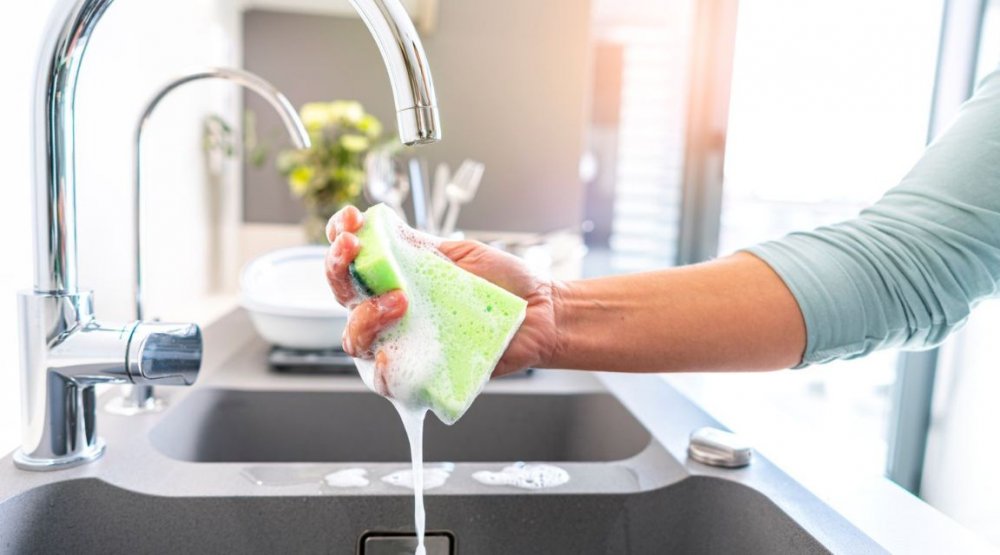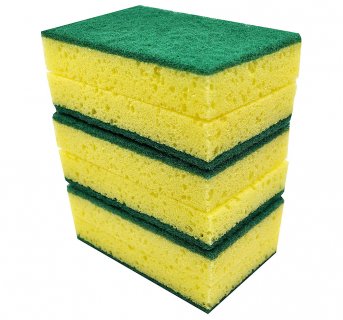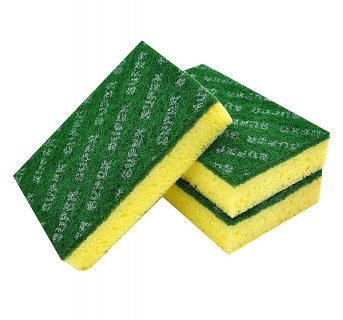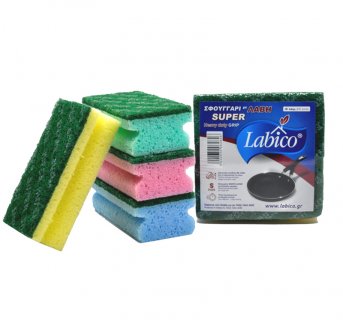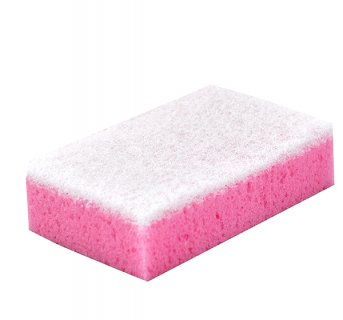Α dish sponge is an item that is never missing from a kitchen! It is a common tool used both for cleaning dishes and other kitchen surfaces. However, there are a few mistakes we often make. Read more:
1. We don't replace it often
If the sponge has been sitting next to our kitchen sink for more than 10 days, it's time we change it! Kitchen sponges can harbor bacteria, mold and mildew over time. Using an old and dirty sponge can spread germs and contaminate dishes.
2. We use it for everything
It is best to use separate sponges for different cleaning tasks to avoid cross-contamination. For example, we should not use the same sponge to clean the dishes and wipe the kitchen counters, because this way we transfer bacteria from one surface to another.
3. We don't store it properly
It is unsanitary to leave a wet sponge in the sink or on the counter as it can promote the growth of bacteria and mould. After each use, wring out the sponge well and store in a well-ventilated area where it can air dry completely. Ideally we can use a sponge holder or hang it up to dry properly. The better it dries, the cleaner it will stay.
4. We don't rinse the sponge well between uses
After each use, it is important to rinse the sponge thoroughly to remove any food particles, soap residue or cleaning products. Otherwise, debris and bacteria will build up on the sponge.
5. We don't wring it out
When we are done washing dishes or wiping surfaces with the kitchen sponge, make sure to wring it out completely. A wrung-out sponge will dry faster than a wet one, and a drier sponge equals a cleaner sponge.
6. We use a sponge instead of kitchen paper
Some tasks are better suited to paper towels or napkins. For example, meat juices are best cleaned with absorbent kitchen paper. Instead of possibly contaminating other surfaces with a sponge coated in raw chicken juice, we can simply clean it with paper towels, which we then throw away!
7. We use the sponge on hot surfaces
Kitchen sponges are usually made of synthetic materials that can melt or dissolve when exposed to high heat. Using a sponge on hot surfaces such as stovetops or grills can damage the sponge and potentially leave residue or melted bits behind.
CAUTION!
We should not clean the sponge in the microwave oven or in the dishwasher. If we want to clean it more effectively, we use a mixture of water and bleach and then rinse it well!
(www.labico.gr)

